
Herbert George Wells was an English writer. Prolific in many genres, he wrote more than fifty novels and dozens of short stories. His non-fiction output included works of social commentary, politics, history, popular science, satire, biography, and autobiography. Wells' science fiction novels are so well regarded that he has been called the "father of science fiction".

Philip José Farmer was an American author known for his science fiction and fantasy novels and short stories.
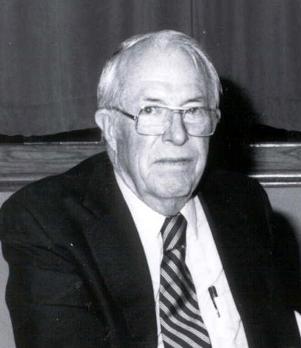
John Stewart Williamson, who wrote as Jack Williamson, was an American science fiction writer, one of several called the "Dean of Science Fiction". He is also credited with one of the first uses of the term genetic engineering. Early in his career he sometimes used the pseudonyms Will Stewart and Nils O. Sonderlund.

The Time Ships is a 1995 hard science fiction novel by Stephen Baxter. A canonical sequel to the 1895 novella The Time Machine by H. G. Wells, it was officially authorized by the Wells estate to mark the centenary of the original's publication. The Time Ships won critical acclaim. It won the John W. Campbell Memorial Award and the Philip K. Dick Award in 1996, as well as the British Science Fiction Association Award in 1995. It was also nominated for the Hugo, Clarke and Locus Awards in 1996.

Sleeper is a 1973 American science fiction comedy film directed by Woody Allen, who co-wrote it with Marshall Brickman. Parodying a dystopic future of the United States in 2173, the film involves the misadventures of the owner of a health food store who is cryogenically frozen in 1973 and defrosted 200 years later in an ineptly led police state. Contemporary politics and pop culture are satirized throughout the film, which includes tributes to the classic comedy of Buster Keaton, Harold Lloyd, and Charlie Chaplin. Many elements of notable works of science fiction are also paid tribute to, or parodied.
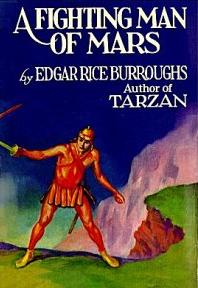
A Fighting Man of Mars is a science fantasy novel by American writer Edgar Rice Burroughs, the seventh of his Barsoom series. Burroughs began writing it on February 28, 1929, and the finished story was first published in The Blue Book Magazine as a six-part serial in the issues for April to September 1930. It was later published as a complete novel by Metropolitan in May 1931.

John Fredrick Thomas Jane was the founding editor of reference books on warships and aircraft and the namesake of what would become Jane's Information Group and many of its publications.

Lilith: A Romance is a fantasy novel by Scottish writer George MacDonald, first published in 1895. It was reprinted in paperback by Ballantine Books as the fifth volume of the Ballantine Adult Fantasy series in September 1969.
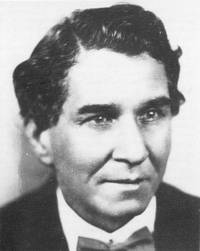
Matthew Phipps Shiell, known as M. P. Shiel, was a British writer. His legal surname remained "Shiell" though he adopted the shorter version as a de facto pen name.

Armageddon 2419 A.D. is a science fiction novella by Philip Francis Nowlan that first appeared in the August 1928 issue of the pulp magazine Amazing Stories. A sequel called The Airlords of Han was published in the March 1929 issue of Amazing Stories. Both stories are now in the public domain in the U.S. according to the Project Gutenberg website. In the 1960s, Nowlan's two novellas were combined by editor Donald A. Wollheim into one paperback novel, titled Armageddon 2419 A.D.
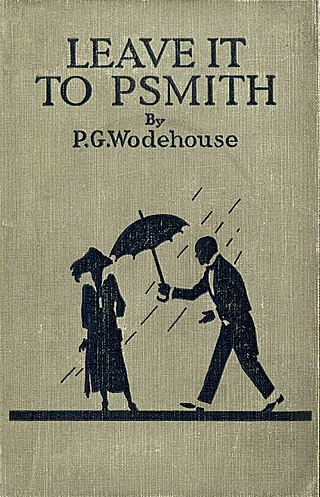
Leave It to Psmith is a comic novel by English author P. G. Wodehouse, first published in the United Kingdom on 30 November 1923 by Herbert Jenkins, London, England, and in the United States on 14 March 1924 by George H. Doran, New York. It had previously been serialised, in the Saturday Evening Post in the US between 3 February and 24 March 1923, and in the Grand Magazine in the UK between April and December that year; the ending of this magazine version was rewritten for the book form.
The Sun Makers is the fourth serial of the 15th season of the British science fiction television series Doctor Who, which was first broadcast in four weekly parts on BBC1 from 26 November to 17 December 1977.

George Chetwynd Griffith-Jones was a British writer. He was active mainly in the science fiction genre—or as it was known at the time, scientific romance—in particular writing many future-war stories and playing a significant role in shaping that emerging subgenre. For a short period of time, he was the leading science fiction author in his home country both in terms of popularity and commercial success.
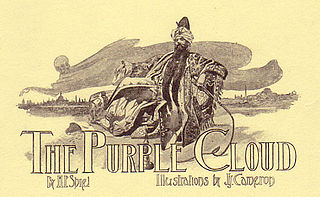
The Purple Cloud is an apocalyptic "last man" novel by the British writer M. P. Shiel. It was published in 1901. H. G. Wells lauded The Purple Cloud as "brilliant" and H. P. Lovecraft later praised the novel as exemplary weird fiction, "delivered with a skill and artistry falling little short of actual majesty."

Victor Rousseau Emanuel was a British writer who wrote novels, newspaper series, science fiction and pulp fiction works. He was active in Great Britain and the United States during the first half of the 20th century.
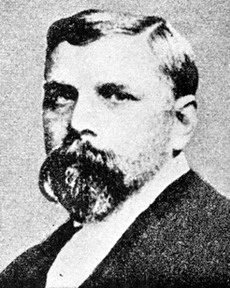
Robert Barr was a Scottish-Canadian short story writer and novelist who also worked as a newspaper and magazine editor.
"A Story of the Days To Come" is a novella by H. G. Wells comprising five chapters that was first published in the June to October 1899 issues of The Pall Mall Magazine. It was later included in an 1899 collection of Wells's short stories, Tales of Space and Time.

H. G. Wells was a prolific writer of both fiction and non-fiction. His writing career spanned more than sixty years, and his early science fiction novels earned him the title of "The Father of Science Fiction".

Quest for the Future is a science fiction novel by Canadian-American writer A. E. van Vogt. It was first published by Ace Books in 1970.
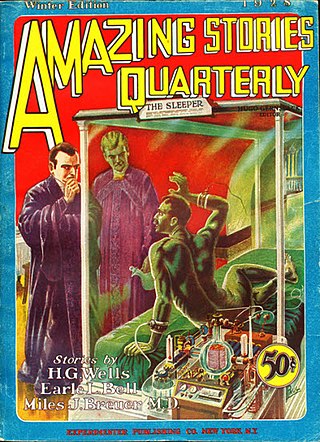
Amazing Stories Quarterly was a U.S. science fiction pulp magazine that was published between 1928 and 1934. It was launched by Hugo Gernsback as a companion to his Amazing Stories, the first science fiction magazine, which had begun publishing in April 1926. Amazing Stories had been successful enough for Gernsback to try a single issue of an Amazing Stories Annual in 1927, which had sold well, and he decided to follow it up with a quarterly magazine. The first issue of Amazing Stories Quarterly was dated Winter 1928 and carried a reprint of the 1899 version of H.G. Wells' When the Sleeper Wakes. Gernsback's policy of running a novel in each issue was popular with his readership, though the choice of Wells' novel was less so. Over the next five issues, only one more reprint appeared: Gernsback's own novel Ralph 124C 41+, in the Winter 1929 issue. Gernsback went bankrupt in early 1929, and lost control of both Amazing Stories and Amazing Stories Quarterly; associate editor T. O'Conor Sloane then took over as editor. The magazine began to run into financial difficulties in 1932, and the schedule became irregular; the last issue was dated Fall 1934.
























